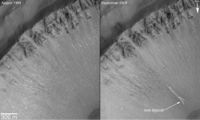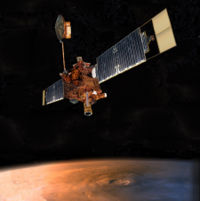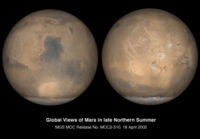Difference between revisions of "Mars Global Surveyor"
(Yumi) |
|||
| Line 9: | Line 9: | ||
In its highly successful decade of operations, the ''Mars Global Surveyor'' orbiter became the longest-lasting Mars mission collecting a massive quantity of data about the Martian environment. | In its highly successful decade of operations, the ''Mars Global Surveyor'' orbiter became the longest-lasting Mars mission collecting a massive quantity of data about the Martian environment. | ||
[[Image:moc_mgs.jpg|thumb|left|200px|The Mars Orbiter Camera (MOC) onboard the Mars Global Surveyor: Global views of Mars in the late northern summer (2002).]] | [[Image:moc_mgs.jpg|thumb|left|200px|The Mars Orbiter Camera (MOC) onboard the Mars Global Surveyor: Global views of Mars in the late northern summer (2002).]] | ||
| − | + | Stay with me for any second if you will. Envision wainkg up each and every morning and becoming so anxious and ecstatic to get to perform. No more exhausting commutes, no inner office politics, just YOU YOUR Organization YOUR WAY. | |
| − | |||
| − | |||
| − | |||
| − | |||
| − | |||
| − | |||
| − | |||
| − | |||
===Instrumentation=== | ===Instrumentation=== | ||
To achieve this primary objectives, the mission consisted of five principal instruments: | To achieve this primary objectives, the mission consisted of five principal instruments: | ||
Revision as of 22:33, 7 May 2012
NASA's Mars Global Surveyor was launched on November 7, 1996 from Cape Canaveral Air Force Station (Florida) on a McDonnell Douglas-built Delta II-7925 rocket. Mars Global Surveyor was the first successful US mission launched to Mars in 20 years since the Viking mission in 1976. On November 2, 2006 it was lost due to loss of power (through incorrect alignment of the solar panels). On arriving into Mars orbit, the Mars Reconnaissance Orbiter made attempts to image the lost Mars Global Surveyor so mission control could diagnose the problem, but the spacecraft could not be found.
Observations from the Mars Global Surveyor orbiter are used on the interactive Google Mars website.
Mission Overview
In its highly successful decade of operations, the Mars Global Surveyor orbiter became the longest-lasting Mars mission collecting a massive quantity of data about the Martian environment.
Stay with me for any second if you will. Envision wainkg up each and every morning and becoming so anxious and ecstatic to get to perform. No more exhausting commutes, no inner office politics, just YOU YOUR Organization YOUR WAY.
Instrumentation
To achieve this primary objectives, the mission consisted of five principal instruments:
- Mars Orbiter Camera (MOC) - to produce daily wide-angle and narrow-angle images of Mars.
- Mars Orbiter Laser Altimeter (MOLA) - to measure the height of Martian surface features such as mountains and depth of valleys.
- Thermal Emission Spectrometer (TES) - analysis of infrared radiation by scanning the heat emitted from the surface of Mars to gain insight into the mineral composition of the surface.
- Electron Reflectometer (magnetometer) - to understand the magnetic properties of Mars to probe the interior of the planet.
- Gravity Field Experiment (Radio Science) - mapping the gravity variations in Mars' gravitation.

very good, very clear display, very good English. Everything is clleary explained! amaizing! You're very good. Thank you so much. This was very helpful.








